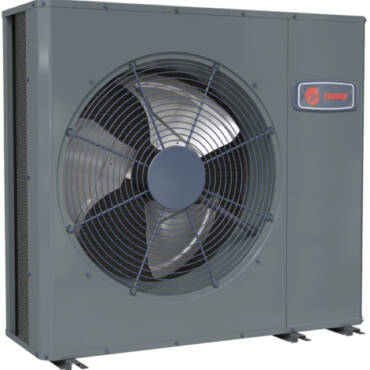As we all know, the COVID-19 pandemic forced many companies to reduce or eliminate non-essential or complimentary services in an effort to keep operating costs low. For companies in the service industry, it also caused a hyperfocus on business continuity; more specifically, on waste reduction. This effort was necessary for many to survive; for others, it presented an opportunity to trim some fat and lean out their operating processes.
The results were so impactful that many changes have become permanent. Adapted services like virtual doctor’s appointments, remote meetings, electronic real estate transactions, QR code restaurant menus, self-service kiosks, and many, many more are all examples of ways companies have improved operating efficiencies and eliminated procedural waste.
Many companies established a new normal that has undoubtedly been more efficient than the pre-pandemic era. For those who didn’t embrace some of the same cost-saving measures, they may have found themselves taking a back seat to national conglomerates and franchise groups moving into their area.
To articulate this point, I’m going to steal a chapter from my own work, Gross Profits Harvesting, published in 2016. This article was written to provide contractors with ideas for ways they could maximize their gross profit lines by focusing on internal elements of the business that are completely in their control. One of the most impactful elements is waste. The following is a modified excerpt from that article.
Waste
Waste is defined as those activities that do not add value to the form or function of a product or service. Value is the worth placed on something for which a customer is willing to pay—the operative part of that statement being the willingness to pay. Now think about all the activities that are performed on a routine basis that the customer may not be willing to pay for: loading equipment, taking inventory of supplies and equipment, waiting on decisions, completing paperwork, cleaning and maintaining equipment, callbacks, supply runs, etc. The list is long.
These non-value-added activities can often account for the majority of the total time on a project. This means there is more waste in the service than billable value. Yet, most operators in the service industry will put more effort into trying to improve value-added activities when they should really be looking to minimize waste.
Along these same lines, we can look at the value-added activities being performed every day on a job site but not being billed. These are the freebies, giveaways, or even oversights by well-intended technicians that were either missed on the initial scope or simply given to the customer in a manner of goodwill. Someone is paying for these activities and if it isn’t the customer, then it’s the contractor. I once worked for a very wise businessman whose motto was simple. He said, “We are not a bank, and we don’t work for free.” These are good words to operate by.
I have always said that profitability in business is a very simple equation: sell your products and services for more than it takes to produce them and you will never go wrong. But we must remember that there are two sides to this equation. There should be plenty of margin already built into your services. The profit is there. It’s just waiting to be harvested.
Many top Total Quality Management (TQM) experts and Six Sigma gurus agree that there are eight wastes that can be focused on in manufacturing environments. In the service sector, there are seven of those that are immediately transferable. Let’s take this concept to the next level by identifying those areas where service-based businesses can reduce or eliminate waste.
Defects
Callbacks, warranty claims, and workmanship issues with services performed are all examples of defects in the service industry. The vast majority of these issues arise from the individuals doing manual labor where the desirable output is heavily reliant on the technician’s skills. Each failure that occurs costs the company 3x the cost of that service because the company 1.) paid to have the initial service completed incorrectly, 2.) paid to have it done another time correctly, or 3.) lost the opportunity for that resource or service technician to complete new services for another customer.
Overproduction
This occurs any time more resources than necessary are used to perform processes or services. We see this over and over when two technicians are put into a vehicle to go to a job site and perform services that only require one person. Meetings are another source of overproduction, such as when senior managers routinely call meetings to “review information” or “discuss situations” in which no decisions are made. If you really want to see this proven, download one of the many meeting cost calculator apps and try it out for your next meeting. Compare the cost of the meeting to the benefit received in dollars from that meeting and then determine if it was really worth it.
Waiting
Nonproductive, non-billable, direct or indirect labor costs are a killer for profitability. Unfortunately, this is prolific in almost every business in which labor services are involved. While the ideal scenario would be that every employee is working on revenue-producing activities every minute of the workday, we must realize this is but a pipe dream. The reality of the situation is that employees will spend a good portion of their payroll hours waiting—behind the windshield getting to and from the job site, at the suppliers for materials, in the office looking for instruction, around the water cooler listening to the latest gossip.
Capacity Underutilization
While today, many businesses are running perpetual employment ads and possibly searching to supplement capacity with subcontractors, many overlook the existing capacity that is not being utilized in their organization. This goes beyond just idle resources. It comes in the form of poor planning and inappropriate resource allocation. Just as it would be overkill to take an aircraft carrier on a fishing trip, the same holds true for high-cost, top producers who are assigned to tasks well below their pay grade and productivity levels, such as having a project manager pull permits or a lead technician pick up supplies and materials. This results in opportunity costs that can easily erase any benefits received.
Inventory
Many companies look at equipment inventory as a status symbol. The more shiny, fancy, new toys they have in the warehouse, the bigger the perception. Personally, I want to cry every time I walk through a client’s warehouse and see equipment lining the shelves or vehicles parked in the parking lot. These resources are not making the company money if they aren’t on a job. If you have this scenario, more often than not, you have too much inventory.
Movement
Movement is one of those wastes that most people take for granted as not being able to be changed or, worse yet, they view it as an acceptable inefficiency in a process. In a manufacturing environment, this is measured by the distance a worker must travel to get parts, supplies, tools, or other components required to complete the assembly of product. In the service world, I would challenge companies to look at movement as any time when a worker is “on the job” but doesn’t have the right tool in their hands. It could be the amount of time to move from one area of the job to another, back to the van to get equipment or tools, or even around the warehouse looking for supplies.
Redundancy
Any time more than one employee performs the same task on the same project more than once, there is redundancy. This could be as small as recording job logs in multiple locations or as large as making numerous revisions to estimates. Much like callbacks and warranty claims mentioned earlier, redundancy costs a company 3x the actual price of doing these activities a single time.
According to my calculations and observation of operational improvement initiatives across a variety of different sizes of businesses, these wastes (including the opportunity costs) can represent as much as 4% – 6% of revenue. That’s no small chunk of change for any company with a meaningful top line. My conclusion is that in the very near future, we will most likely see the beginning of a new direct labor revolution in which many of these process activities and services become automated through advanced technology like AI and robotics. A new era of business is upon us; prepare your company now, because it’s about to become VERY interesting.
Whether you require installation, repair, or maintenance, our technicians will assist you with top-quality service at any time of the day or night. Take comfort in knowing your indoor air quality is the best it can be with MOE heating & cooling services Ontario's solution for heating, air conditioning, and ventilation that’s cooler than the rest.
Contact us to schedule a visit. Our qualified team of technicians, are always ready to help you and guide you for heating and cooling issues. Weather you want to replace an old furnace or install a brand new air conditioner, we are here to help you. Our main office is at Kitchener but we can service most of Ontario's cities
Source link



